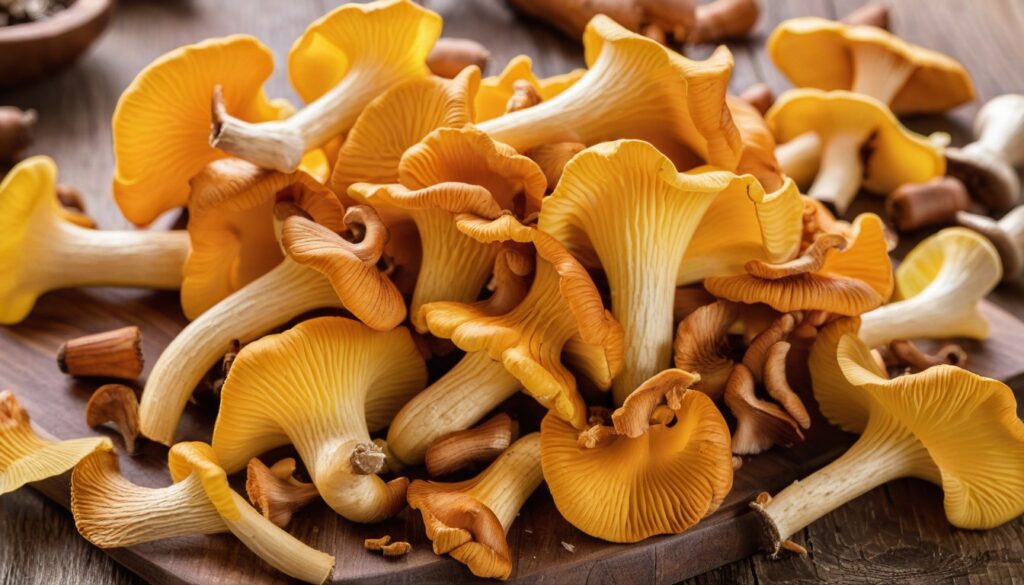If you’re a mushroom lover and live in Minnesota, you’re in luck! The lush forests and diverse natural areas in the state offer excellent spots for foraging chanterelle mushrooms, prized for their unique flavor and nutritional benefits. But finding them requires expertise and knowledge of the preferred growing conditions, habitats, and seasons. In this article, we’ll provide valuable foraging tips tailored specifically for Minnesota, so you too can embark on a thrilling journey to discover these delightful fungi in their natural habitat.
Key Takeaways
- Chanterelle mushrooms are a prized fungi species known for their unique flavor and nutritional benefits.
- Minnesota is an excellent spot for foraging chanterelle mushrooms, given its diverse natural areas and lush forests.
- Proper identification of chanterelle mushrooms is essential for successful foraging.
- Understanding the growing conditions and preferred habitat of chanterelle mushrooms can help you identify the best spots and seasons for harvesting.
- Foraging chanterelle mushrooms ethically and sustainably is crucial to preserving both the environment and the fungi’s long-term viability.
What are Chanterelle Mushrooms?
Chanterelle mushrooms are a type of fungi that are highly sought-after in the culinary world for their unique flavor profile and distinctive appearance. These mushrooms are typically found in forests and wooded areas and are widely available in various parts of the world, including Minnesota. Chanterelle mushrooms are known for their trumpet-shaped caps and bright yellow-orange color, making them easy to identify once you know what to look for.
One of the reasons chanterelle mushrooms are so highly regarded by chefs and food enthusiasts alike is due to their rich, earthy flavor that pairs well with a wide range of dishes. They have a unique taste that is not too overpowering, making them a versatile ingredient in many dishes. Beyond their culinary appeal, chanterelle mushrooms are also packed with essential nutrients such as protein, vitamins, and minerals, making them a healthy addition to any diet.
“Chanterelle mushrooms are like gold in the culinary world. Their rich, earthy flavor and unique appearance make them a prized ingredient that is highly sought-after by chefs and food lovers alike.”
Identifying Chanterelle Mushrooms in Minnesota
If you’re planning to forage for chanterelle mushrooms in Minnesota, knowing how to identify them from other similar species is crucial. This section will provide practical tips on how to distinguish true chanterelle mushrooms from their look-alike counterparts.
True chanterelle mushrooms come in various colors ranging from bright yellow to orange, with a characteristic funnel or trumpet-like shape. Their caps are convex on the top side and feature wavy, lobed edges with thick ridges underneath. The stem is typically the same color as the cap and tends to be solid, without any visible gills.
One of the most common look-alike species for chanterelle mushrooms is the false chanterelle. It shares a similar funnel-like shape, but the cap is typically more vase-shaped with a smooth, wavy margin. The gills underneath are more pronounced and run down the stem, which is usually hollow and not as firm as the true chanterelle.
Another look-alike to watch out for is the jack-o-lantern mushroom. While it also has a bright orange color, it has a distinct, gilled underside and an inedible, poisonous nature. Be careful not to confuse it with true chanterelles.
When in doubt about any mushroom you find during your foraging expedition, it’s best to err on the side of caution and not consume it. Always consult a professional mycologist or experienced forager for identification assistance.
Ideal Conditions for Chanterelle Growth in Minnesota
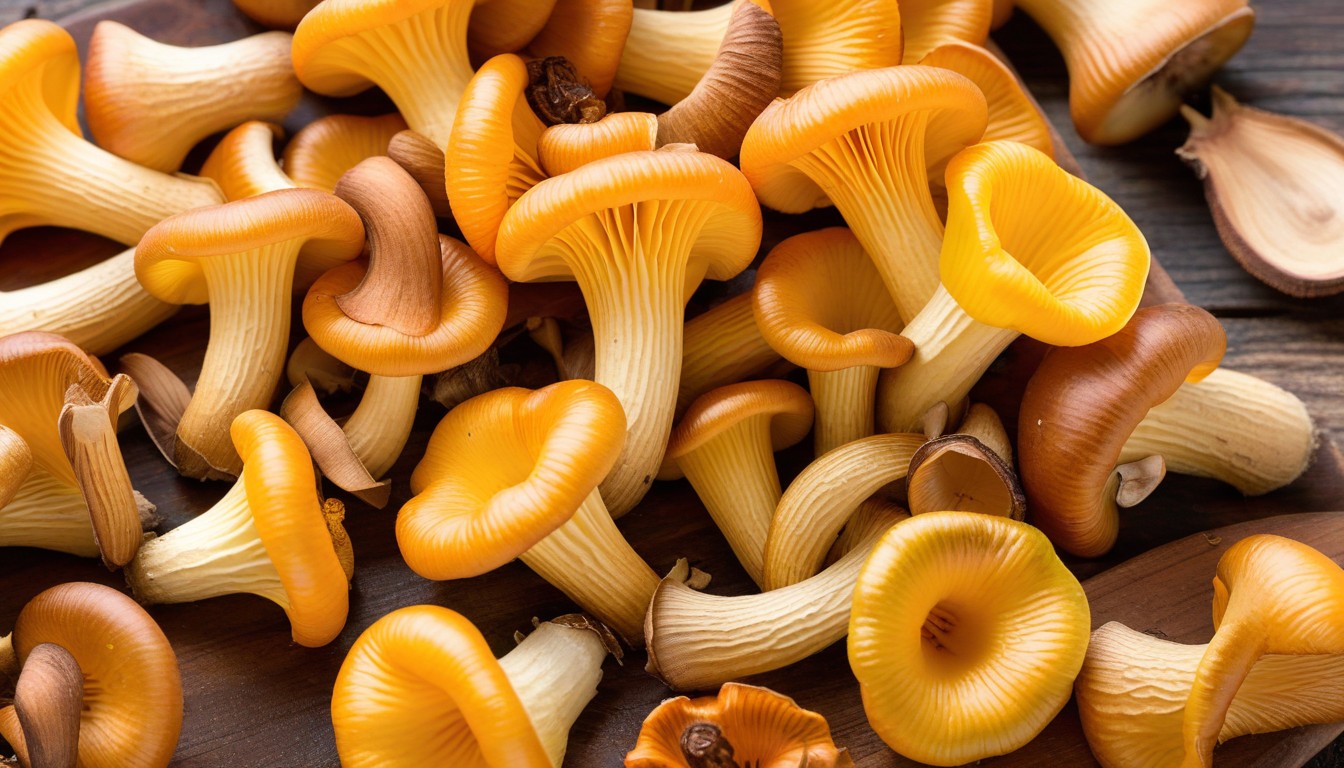
If you’re looking to forage for chanterelle mushrooms in Minnesota, it’s important to understand the ideal conditions for their growth. Chanterelles thrive in deciduous forests and areas with well-drained soil, and are often found near oak, ash, and birch trees. These mushrooms also prefer areas with moderate moisture levels and plenty of dappled sunlight.
Soil acidity is another key factor in chanterelle growth. These mushrooms prefer neutral to slightly acidic soils with a pH between 6.0 and 7.5. The presence of certain plants can also indicate ideal chanterelle habitat, such as blueberries, jack-in-the-pulpits, and bunchberry.
Soil Type
|
Soil Type |
Description |
|---|---|
|
Sandy or Loamy Soil |
Well-draining, ideal for chanterelle growth |
|
Clay Soil |
Too heavy and poorly draining for chanterelles |
|
Rocky or Gravelly Soil |
May support chanterelle growth, but not ideal |
Overall, the ideal conditions for chanterelle growth in Minnesota can vary depending on the specific location and season. However, by understanding these key environmental factors, you can increase your chances of successfully foraging for these delicious and coveted mushrooms.
Best Spots for Chanterelle Mushroom Foraging in Minnesota
Minnesota offers some of the best spots for chanterelle mushroom foraging, with vast areas of lush forests, state parks, and natural reserves.
|
Location |
Details |
|---|---|
|
Superior National Forest |
Located in Northern Minnesota, this extensive forest is home to large chanterelle populations in the late summer and early fall. |
|
Chippewa National Forest |
Stretched across central and northern Minnesota, this forest offers ideal foraging conditions with dense tree coverage and moist soil. |
|
Wild River State Park |
This park is located in the eastern part of Minnesota and provides hilly terrain and oak savannas, known to host abundant chanterelle mushrooms. |
|
Boundary Waters Canoe Area Wilderness |
Tucked in the northeastern corner of Minnesota, this vast wilderness is abundant in chanterelle mushrooms, especially in late July and early August. |
Other areas that are worth exploring for chanterelle mushroom foraging in Minnesota include the Carlos Avery State Wildlife Management Area, Minneopa State Park, and the Superior Hiking Trail.
When foraging in any of these locations, always be sure to follow ethical practices, such as leaving no trace and not consuming or damaging any other species of flora or fauna.
Get ready to explore the best spots for chanterelle mushroom foraging in Minnesota and enjoy the bountiful rewards of nature!
Seasons for Harvesting Chanterelle Mushrooms in Minnesota
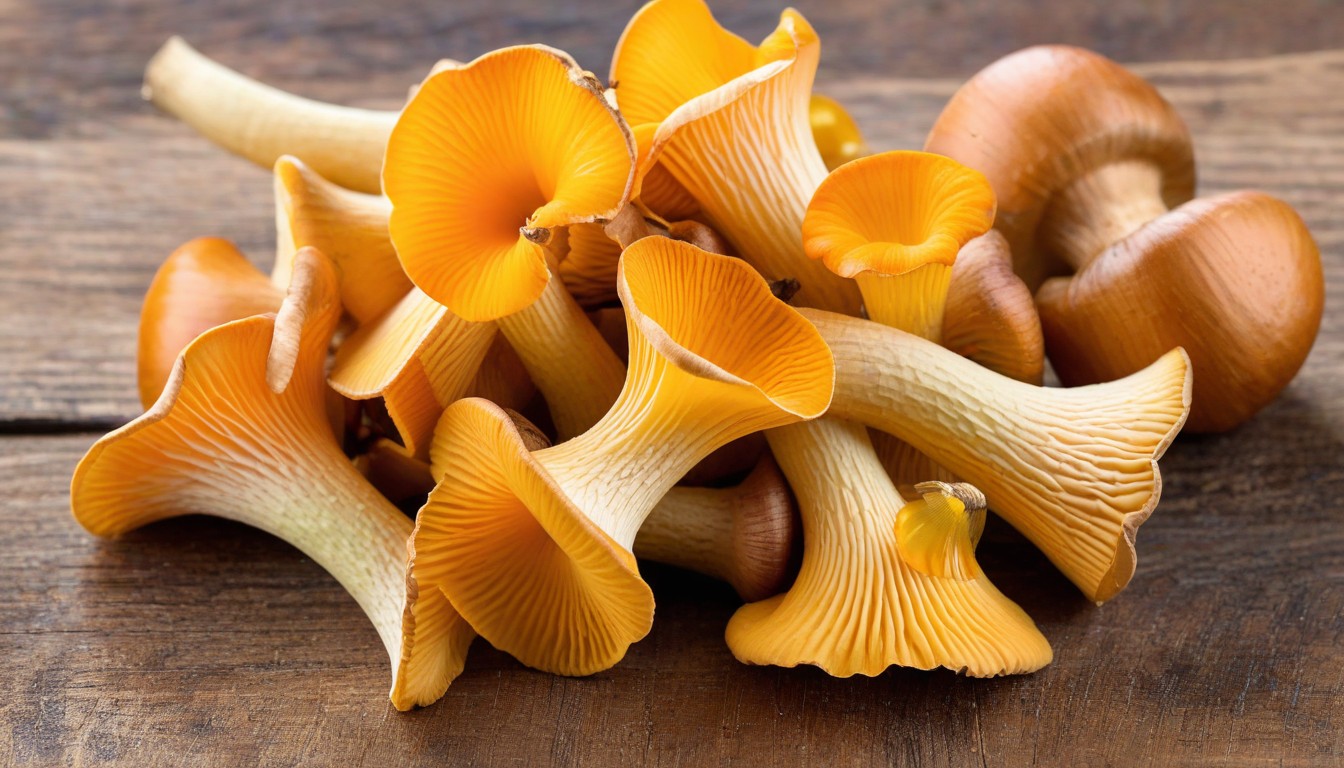
Harvesting chanterelle mushrooms in Minnesota requires an understanding of the different seasons and months that yield the best crop. The ideal time to forage for chanterelles is between June and October, with the peak months being July and August. (Note: Add emphasis to the months June to October and peak months).
Different factors influence the chanterelle season in Minnesota, such as temperature and precipitation. The temperature range between 70°F and 90°F is optimal for the growth and maturation of chanterelle mushrooms. (Note: italicize the temperature range).
|
Month |
Temperature (°F) |
Conditions |
|---|---|---|
|
June to August |
70-80°F |
Moderate rainfall |
|
September to October |
40-50°F |
Decrease in rainfall |
The warm and moist climate of Minnesota offers the perfect conditions for chanterelles to flourish. During peak months, you can expect to forage up to 15 pounds of chanterelles per week. (Note: emphasize “15 pounds of chanterelles per week”).
To maximize your yield during peak seasons, update yourself on the local weather forecasts, and visit your preferred foraging spots as frequently as possible. Make notes of the areas that tend to yield the greatest harvest, and try new locations to increase your chances of success. (Note: emphasize “increase your chances of success”).
Ethical Foraging Practices for Chanterelle Mushrooms in Minnesota
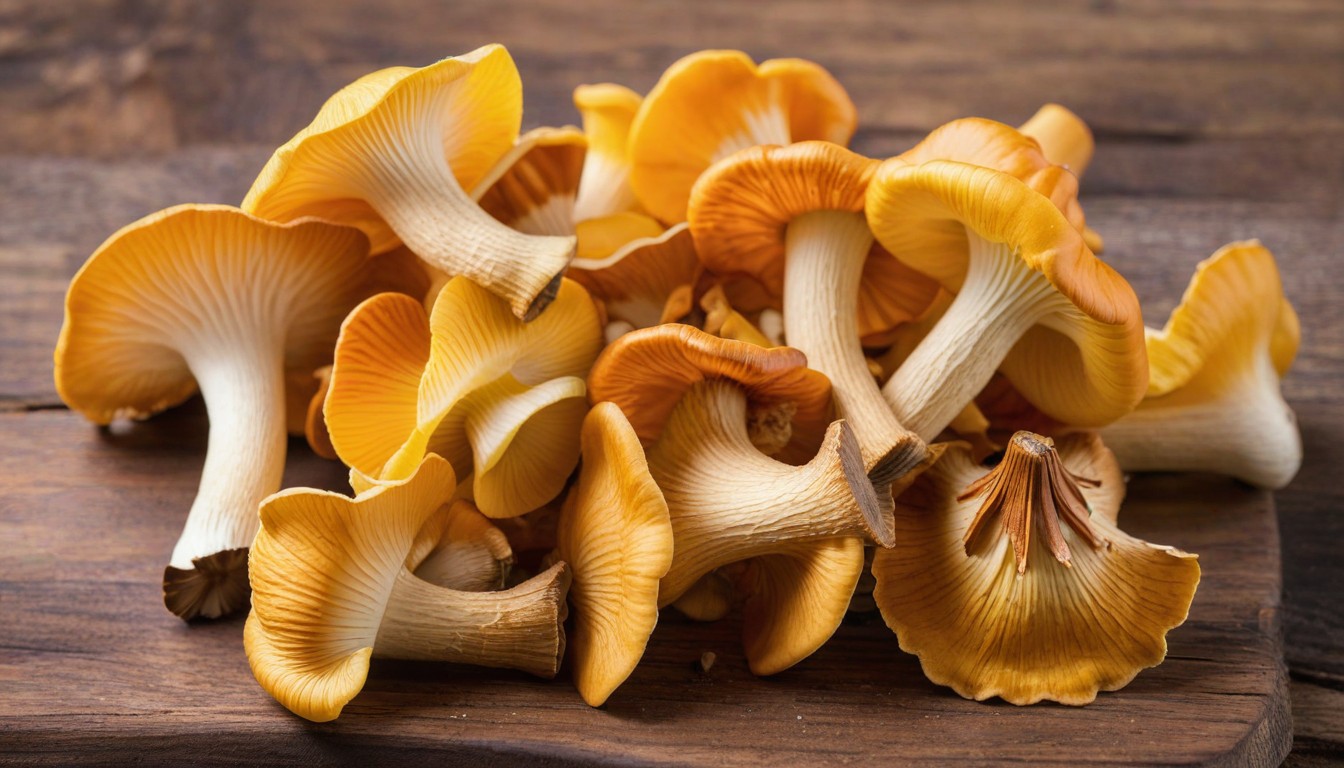
As with any foraging, it’s important to consider the impact on the environment and the sustainability of the species. This is particularly crucial when it comes to chanterelle mushrooms, which play an essential role in the ecosystem. Here are some ethical foraging practices to keep in mind when searching for chanterelles in Minnesota:
1. Respect the Environment
When foraging for chanterelles, it’s important to respect the environment and leave it as you found it. Only take what you need and avoid damaging other plants or disturbing wildlife habitats.
2. Follow the Rules and Regulations
Be sure to know the hunting and foraging regulations of the state parks or forests where you’re searching for mushrooms. Follow the guidelines and obtain necessary permits to ensure that you’re not breaking any rules.
3. Use Appropriate Equipment
If you’re going to forage chanterelles, it’s important to have the right gear. Use a sharp knife or scissors to cut the mushrooms close to the ground, leaving the stem and root undisturbed. A basket or mesh bag will allow spores to spread, promoting future growth. Avoid using plastic bags, which limit air circulation and damage the mushrooms.
4. Keep the Ecosystem Balanced
Chanterelles are an important part of the ecosystem, so it’s crucial to maintain a healthy balance. Avoid foraging all the chanterelles in one area, rather than taking a few from several locations. This ensures the species can continue to flourish and provide an important food source for other wildlife.
5. Learn from Experienced Foragers
Foraging for chanterelle mushrooms in Minnesota requires expertise and experience. Learning from experienced foragers can help you identify the mushroom correctly, distinguish it from other look-alike species, and find the best locations in different seasons.
|
Ethical Foraging Practices for Chanterelle Mushrooms in Minnesota |
|---|
|
1. Respect the Environment |
|
2. Follow the Rules and Regulations |
|
3. Use Appropriate Equipment |
|
4. Keep the Ecosystem Balanced |
|
5. Learn from Experienced Foragers |
Follow these ethical practices to ensure the health and sustainability of chanterelle mushrooms in Minnesota. By foraging responsibly, you can enjoy the delicious taste of these elusive fungi while also preserving them for future generations.
Cleaning and Storing Chanterelle Mushrooms from Minnesota
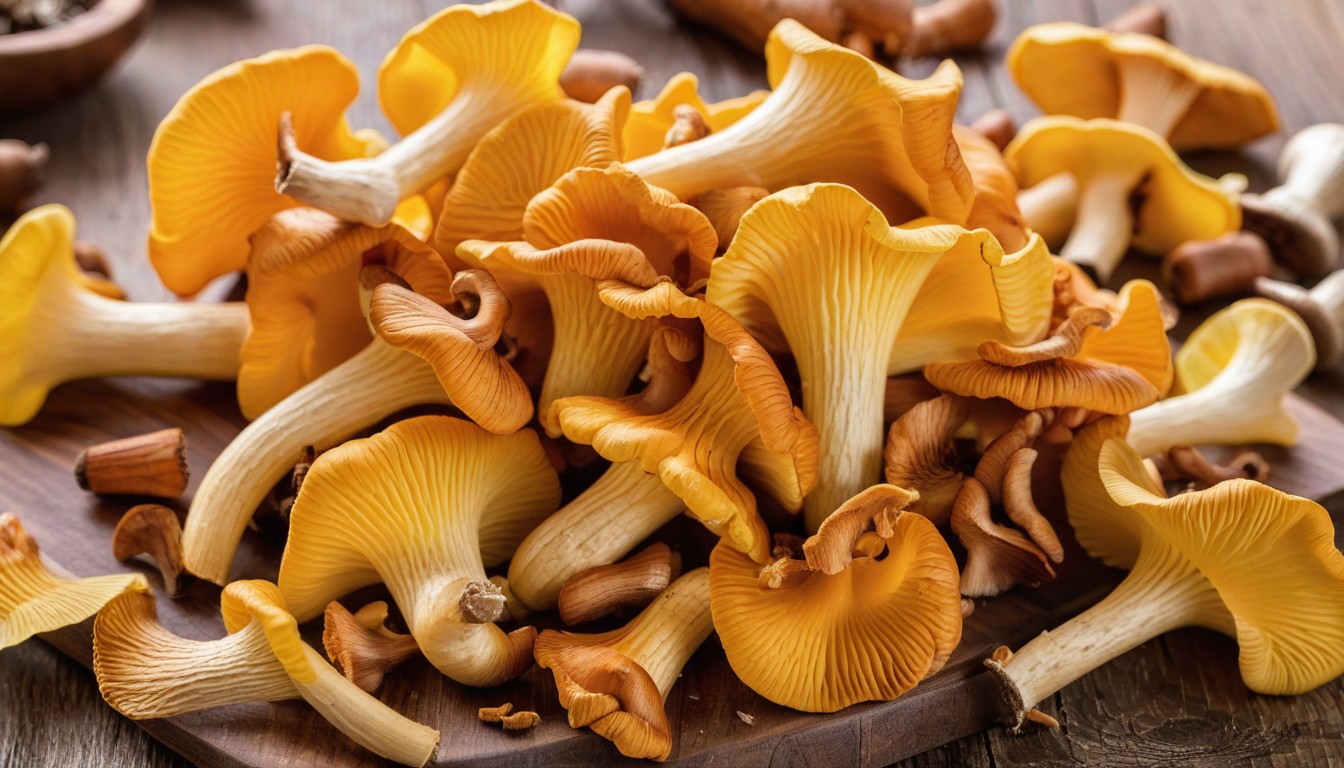
After a successful foraging trip in the Minnesota wilderness, your chanterelle mushrooms are now ready to be cleaned and stored properly to maintain their quality and flavor. Follow these simple steps:
Cleaning Technique
- Brush off any dirt and debris using a soft-bristled brush or a damp paper towel.
- Rinse the chanterelles lightly with cold water, but do not soak them.
- For extra cleaning, mix a tablespoon of salt with a cup of water and dip the chanterelles into the solution, then rinse again with cold water.
Storing Methods
The fresher the chanterelles, the better they taste, but here are some ways to store them:
|
Storage Method |
Description |
|---|---|
|
Refrigerator |
Place the cleaned chanterelles in a paper bag and store them in the refrigerator for up to five days. Check them daily and promptly remove any that have started to spoil. |
|
Freezer |
To preserve your chanterelles for longer, chop them and place them in an airtight container or plastic bag, then freeze them for up to six months. |
Remember to label your containers with the date you harvested the chanterelles for optimal freshness.
Follow these simple techniques and enjoy your delicious chanterelles season after season!
Conclusion
Congrats! You’re now equipped with expert foraging tips for chanterelle mushrooms in Minnesota. It’s time to take that knowledge to the great outdoors and discover the wonderful world of these delectable fungi.
Remember to always practice ethical foraging to ensure the long-term sustainability of chanterelle populations in Minnesota. Follow our guidance for identifying, harvesting, cleaning, and storing chanterelles to maintain their quality and flavor.
Whether you’re a seasoned forager or a novice, chanterelle mushroom foraging in Minnesota is an adventure worth embarking on. So grab your basket, put on your hiking boots, and head out into the forests, state parks, or other natural areas known for abundant chanterelle populations. Happy foraging!
FAQ
How do I identify chanterelle mushrooms?
Chanterelle mushrooms can be identified by their distinctive funnel-shaped caps with wavy edges. They are usually yellow to orange in color and have a fruity aroma. It is crucial to distinguish true chanterelles from look-alike species, such as the false chanterelle, to ensure safe foraging.
What are the best spots for chanterelle mushroom foraging in Minnesota?
Minnesota offers numerous prime locations for chanterelle mushroom foraging. Some popular spots include Tettegouche State Park, Superior National Forest, and the Boundary Waters Canoe Area Wilderness. These areas have ideal conditions and abundant chanterelle populations, making them the perfect destination for foragers.
When is the best time to harvest chanterelle mushrooms in Minnesota?
The prime season for harvesting chanterelle mushrooms in Minnesota typically occurs from late spring to early fall. Ideal moisture levels and temperatures during this period promote optimal growth. It is recommended to harvest chanterelles after rainfall, as they thrive in moist conditions.
How do I clean and store chanterelle mushrooms from Minnesota?
To clean chanterelle mushrooms, gently brush off any dirt or debris using a soft-bristled brush. Avoid washing them, as excessive moisture can affect their texture. Store the cleaned chanterelles in a paper bag or a container lined with a paper towel. Place them in the refrigerator for up to one week.
What ethical practices should I follow when foraging chanterelle mushrooms in Minnesota?
Ethical foraging practices for chanterelle mushrooms in Minnesota include only taking what you need, leaving behind smaller or immature mushrooms to allow for continued growth, and avoiding the destruction of their natural habitat. It is also essential to obtain any required permits or permissions before foraging in specific areas.

